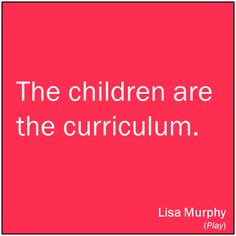It is always exciting to introduce planning within Emergent Curriculum to students, there are so many different types of images and ideas that come to mind when we use emerging curriculum ‘planning.’
One of my favourite ways of describing planning is: Using children’s ideas, theories and actions as a starting point for planning, and then being very intentional, thoughtful, and responsive in reaction to those ideas observed. Being responsive and intentional in planning to children’s strengths, abilities and interests helps to ‘ensure motivation and engagement in learning.’
Inspiring Pedagogy: “Educators are reflective practitioners who learn about children using various strategies. They listen, observe, document, and discuss with others, families in particular, to understand children as unique individuals. They observe and listen to learn how children make meaning through their experiences in the world around them. Educators consider their own practices and approaches and the impacts they have on children, families, and others. Educators use this knowledge, gained through observing and discussing with others, and their professional judgement to create contexts to support children’s learning, development, health, and well-being.” (HDLH, p.19)
Using children’s interests, as the starting point for what we do, rather than as the end point.
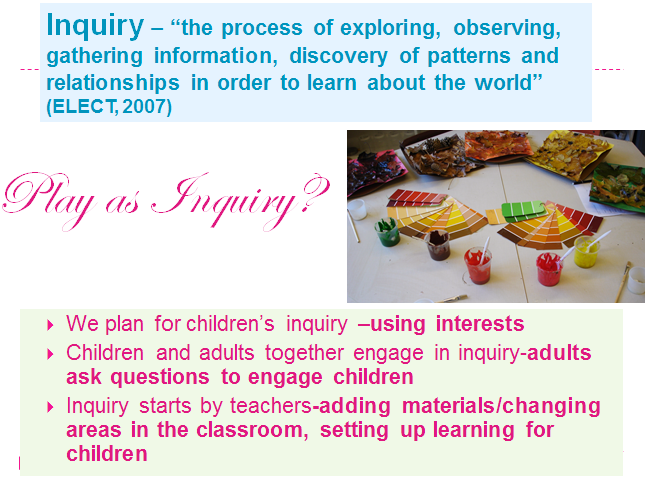
In class, when we begin discussing curriculum planning I like to revisit with students: “how children learn best?”– many times students say: “when children are interested and engaged hands-on.”
Using children’s interests as the basis for our curriculum decision making helps to ensure that learning is not only interesting but also meaningful and relevant to children, as I have observed in my classroom with my students they hold many preconceived ideas about planning experiences for children, one being using “themes.”
“Once children are helped to perceive themselves as authors or inventors, once they are helped to discover the pleasure of inquiry, their motivation and interest explode.”
–Loris Malaguzzi Founder of the Reggio Emilia Schools, Italy
I have discovered in my work with students their anxiety over determining the best interest to pursue, how to begin writing observations, or which interests to use in order to support development–over the course of the program students begin to think carefully about how we respond to each interest, to ensure that we make the best use of our time and effort and maximize children’s opportunities for meaningful and interesting learning. My students have even suggested that sometimes the best response to an interest is to acknowledge it with a comment, a question, or to provide some resources and materials to extend on what is happening–I think this is a great response. Alternatively, noting it down for possible future use can be very helpful as well! And sometimes it might become the start of a bigger and more involved play experience.
Goal of Emergent Curriculum: to inspire delight, curiosity, celebration and inquiry in the classroom.
In the classroom, I introduce students to Curriculum Web Planning as a strategy to planning:
- Webbing provides an outline for planning ideas as the develop. (provides a history)
- Webs help adults understand clearly how children make connections in different areas of learning.
- Webbing creates a team approach to teaching and planning age-appropriate topics.
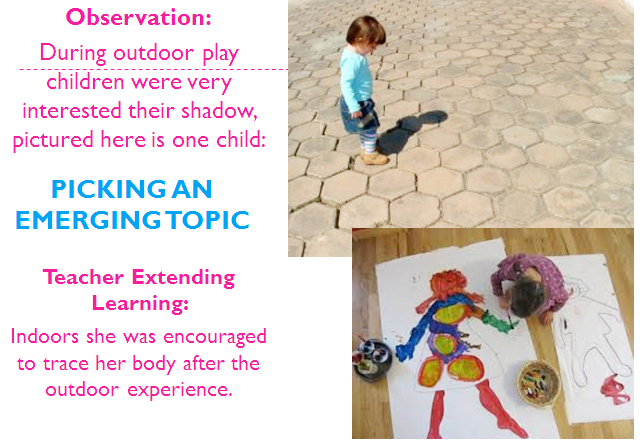
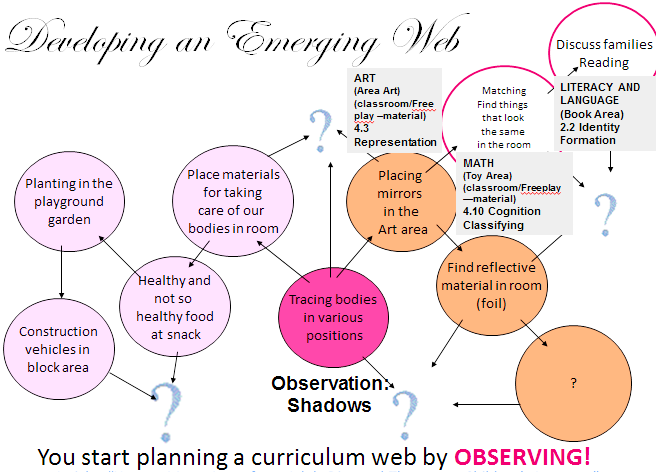
Goal of Emergent Curriculum: To help children craft an internal compass to guide them as a learner, rather than relying on instruction and direction from others.
Students had the opportunity to practice using a curriculum web to plan learning experiences for preschool children. The activity was structured as follows: using photographs of children engaged in various behaviours/actions or in class experiences, document interests and extend learning by planning along with support development using the ELECT. Some examples of students curriculum plans:
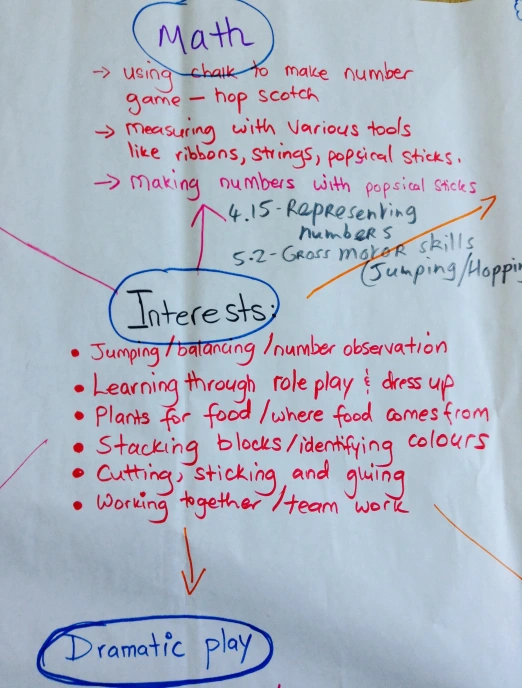
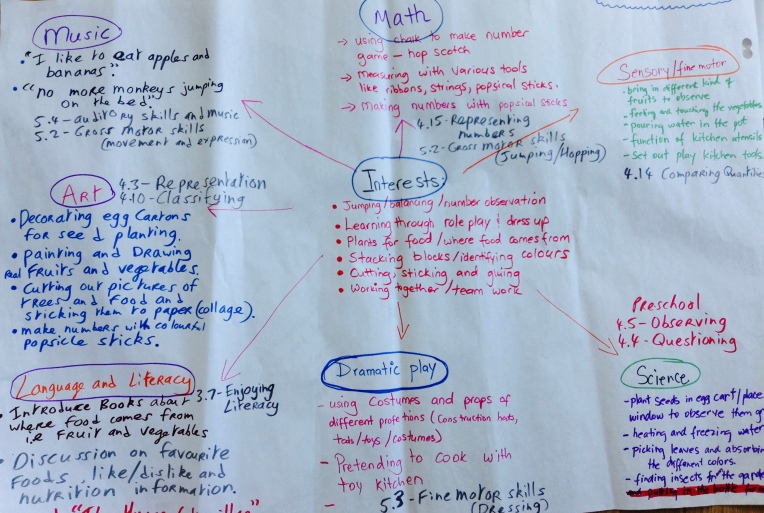

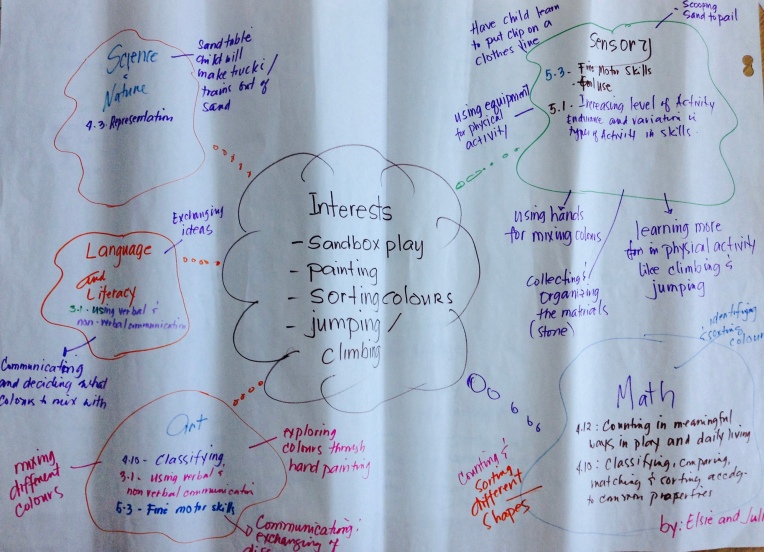
Reflective Questions:
- How does the program encourage all of the children to be engaged?
- How is the environment set up to encourage children to follow their own interests and skills?
- How are the observations of the children being used to offer experiences that extend learning?
- How do you ensure all the learning experiences are inclusive and reflective of different communities and cultures, varying abilities, and family structures including LGBTQ2S families?
As educators, we all know how to ‘read’ whether children are truly engaged in the learning experience, or not. They communicate through their actions, words, responses (or lack of!), and their pure passion for the topic…when the passion is there, the investigation deepens, and we begin yet another journey of deep learning.

